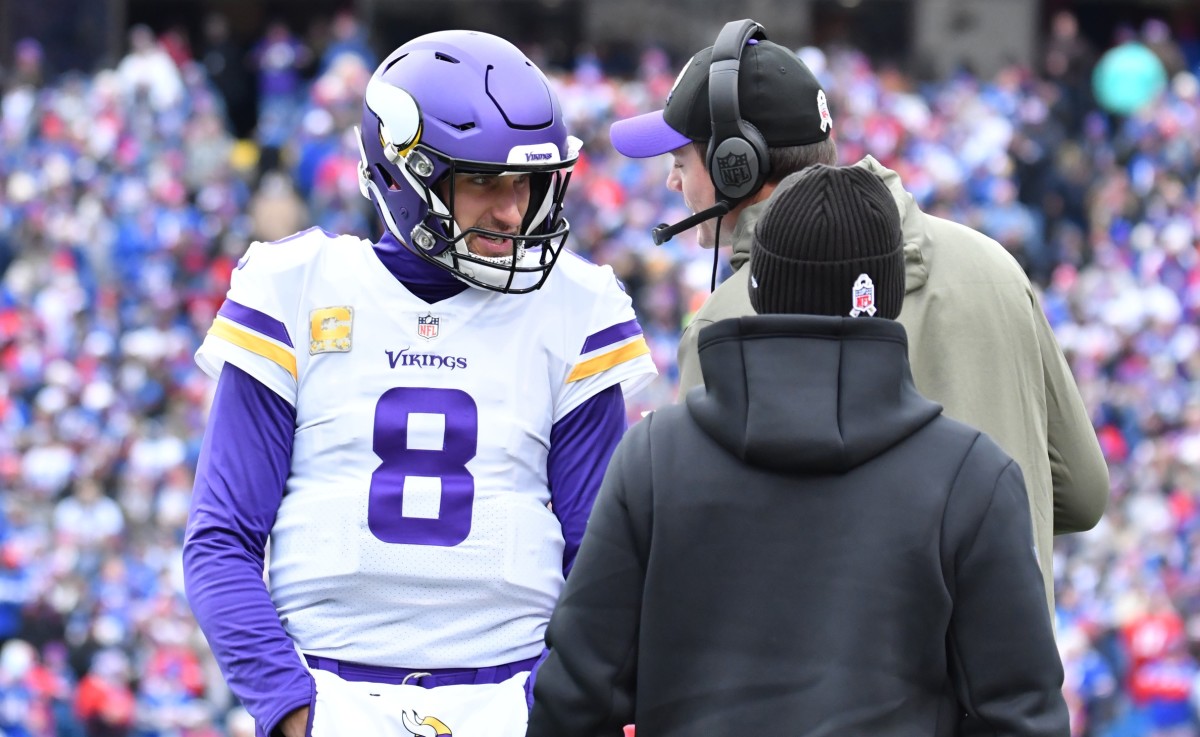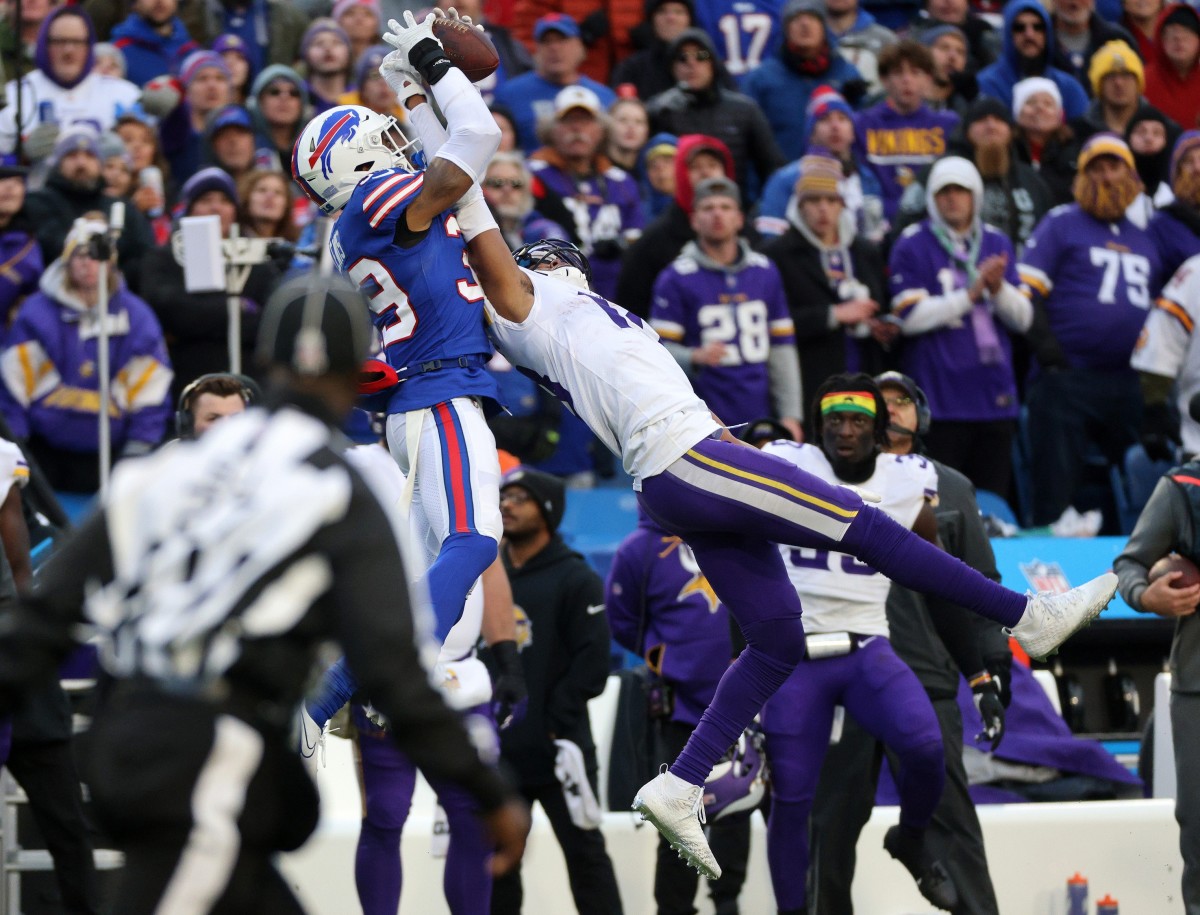How the Vikings Unlocked a New Kirk Cousins, and Aren’t Stopping Now

More from Albert Breer: How Patrick Mahomes Is Trying to Become More Like Tom Brady | Colts Need to Pay Jonathan Taylor, or Anthony Richardson Might Struggle | Q&A: How the Lions’ Leaders Knew to Keep Believing
Kirk Cousins had an interesting way of describing the quarterback position, and one, in a world drowning in coaching metaphors, that I hadn’t really heard before.
I’ll let the Vikings’ quarterback take it from here.
“It’s like being a robot and then being an artist,” he says. “You need to do both as a quarterback. There’s never a way to live on one side of that or the other all the time. If you’re always an artist, you’re going to get sacked, you’re going to get hurt, you’re going to fumble, you’re going to throw picks. You’re going to make some amazing plays, but the production long term won’t be there.
“If you play like a robot, it’s going to be too stiff. Coaches can’t create the perfect play every time, and you’re going to end up hitting a ceiling at some point. The ability to do both is kind of quarterbacking at its core. That’s why you’re out here practicing and working year-round, because you understand trying to find that balance. That will never end.”

I brought the idea up to Cousins, after a sweltering practice held in triple-digit heat and high humidity, because I really believe that’s where he and second-year coach Kevin O’Connell have made their biggest strides together through 18 months. And while no one said it to me directly, I think that’s where the continued growth for the two will be in 2023.
The simple idea that this happened last year—with O’Connell loosening the reins, and getting Cousins to be more playmaker than just play runner—is pretty fascinating to begin with, in a teaching-old-dog-new-tricks sort of way.
The rap on the 34-year-old was always that he was smart and disciplined, almost to a fault. He could carry out any concept the way you ran it on a Wednesday, but if Sunday was unlike what was being taught any other days of the week, then you’d find yourself in choppy waters. And whether that was a fair assessment, it’s an area that O’Connell dived headlong into with Cousins—coming from the staff of one of the quarterback’s old offensive coordinators, Sean McVay, in drilling the concept of throwing “opportunity balls.”
An opportunity ball, pretty simply, is when Cousins would give a teammate a chance to make a play, even if he wasn’t being led there by the scheme or the play call.
“A couple things played into it,” O’Connell says. “Yes, just by design of some of the things we were trying to do and my ultimate confidence in his ability to throw the football and his toughness to stand in there and make some critical throws in critical moments, that’s one element to it. I think with the close games, you don’t just win those games. It’s not a luck thing. And I don’t want to come off at all soured by some of the things I heard.
“For Kirk Cousins, the other phase of that would be that close games require quarterbacks to make some plays that maybe you don’t have to in a normal rhythm and timing of a game, and still give yourself an opportunity to win.”
The most obvious opportunity ball of last season, of course, was on fourth-and-18 to Justin Jefferson in Week 10, a throw and catch that upended a heavily favored Bills team. But it wasn’t the only one.
“What I was most proud of him about is his willingness in those moments to make the throw to JJ, to find K.J. Osborn against the Lions, Dalvin Cook against the Commanders out of the backfield,” O’Connell says. “Even in the comeback against the Colts, some of the throws he made ultimately gave us a chance to complete that comeback, all while staying true to himself.”
"Kevin’s empowered us,” Cousins says. “He’s really tried to affirm all of us and give us confidence. We call them opportunity balls where you feel like, Yeah, the DB’s in position, and he has a chance, but so does our receiver. Let’s give him an opportunity. Kevin’s comfortable putting up those opportunity balls, but it’s still an educated decision. You hold the fate of the franchise in your hands a little bit when you hold the football. Don’t take that lightly.”
And Cousins detailed the three examples that O’Connell offered up for us, to illustrate that.
• The Osborn play against Detroit came in Week 3, a tight-window throw that gave the slot receiver a chance, picked up 28 yards and set up another connection between the two for a 28-yard touchdown in Minnesota’s 28–24 win. “That was a little bit tight,” Cousins says, “but felt like we had gotten that look earlier in the game, and we kind of talked about how if we get it again we probably should be aggressive to it. That’s all I was doing there and setting up for that, got us to field goal range.”
• The Cook touchdown came in Week 9, in Cousins’s return to Washington, tying a game the Vikings would win in the fourth quarter. “Yeah, you’re one-on-one with a linebacker, and if you can throw the ball accurately, you’ve got a chance,” he says. “Sometimes the pocket dictates things. You don’t have all day. There are moments where you say, I can progress, but I’m also probably going to get sacked, so I’m better off putting the ball up and giving us at least a chance, an at bat. Put the ball in play is what coaches always say, so sometimes that’s the thought process. Let’s get a chance here and not ask our O-line to hold up forever.”

• And no one needs a reminder on the Jefferson play against Buffalo, one on which O’Connell told Cousins over the headset simply to give the Vikings’ best player a chance. “Justin’s proven over and over again that when you give him opportunity balls, he tends to make plays,” he says. “It’s smart to continue to do that.”
As O’Connell sees it, Cousins having confidence in those players will make for more confident individuals, which ultimately gives him a more confident team.
Jefferson, for his part, sees it that way, too.
“I feel like Kirk has just as much confidence in me as I do for him,” Jefferson says. “Those plays where I look like I’m covered and he’s giving me opportunities to go up and get a ball, that’s what I live for. That’s his way out. So I always try to make those spectacular plays for him on those.”
So where does all this go next?
Well, in part, because the Vikings were so good in those spots last year, the team went 11–0 in one-score games. Which, the players concede, isn’t likely to be repeated. But Cousins hopes his continued growth, and ability to balance the swashbuckler in him with the game manager, will lead to more games where those sorts of heroics aren’t necessary. And if he’s making plays like those more often, chances are they won’t be.
"We found the inches,” Cousins says. “In 2021, we were in every game, and we just didn’t find inches, and we ended up 8–9. The next year, we were in 11 one-score games and we just happened to win them all. So we went 13–4. The difference, it’s inches. The difference between 8–9 and 13–4 is inches. You don’t really get too comfortable because you realize that the odds of us winning 11 one-score games again isn’t very high.
“Let’s get a little better so we don’t have to win 11 one-score games.”
Of course, with a lot of turnover elsewhere on the roster, that might be easier said than done. But going into their second year together, O’Connell feels good he’ll get the kind of play out of his quarterback he would need to facilitate a less stressful set of Sundays.
And for a reworked team, having that out of that position is a good place to start.
“His confidence level should be very, very high, with his belief in his teammates and their roles within the system, where we’re taking this to, that he can have maximum trust that snap-in and snap-out, all 11 guys are going to be doing their job, and he can execute,” the coach says. “He is getting to the point now where a lot of quarterbacks do where he knows exactly what and how he needs to prepare to give himself a chance to run out of the tunnel on Sunday feeling at his best. That’s physically and mentally.
“Then, his ability to just deal with adversity in the game and still thrive is something he’s always been able to do. Now he gets to do that with that experience in a system he feels comfortable in with the full support of me as the play-caller. Hopefully it’ll come together. I do believe he’s got a chance to have one of the best years he’s had as a quarterback.”
When I asked Cousins whether he thought he would get there and have his best year, he deflected a bit, telling a story instead on how McVay used to drill him on John Wooden’s principle that there has to be continuous improvement, and when there’s not, it’s time to walk away.
The implication being that as Cousins sees it, that improvement, even at 34, hasn’t stopped.
